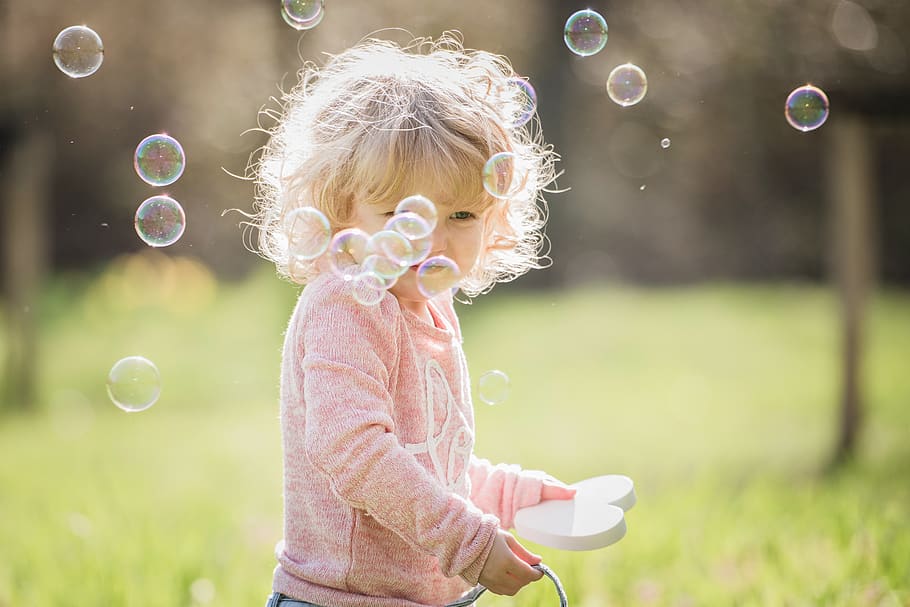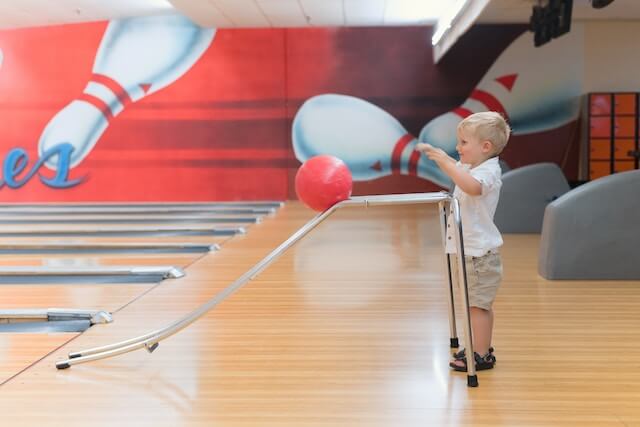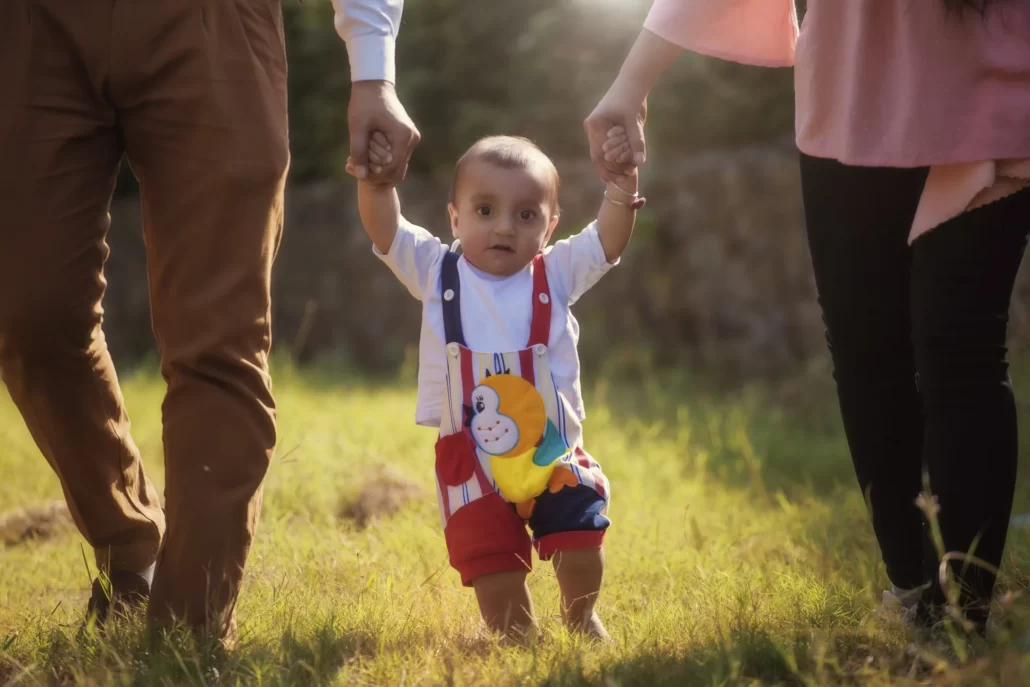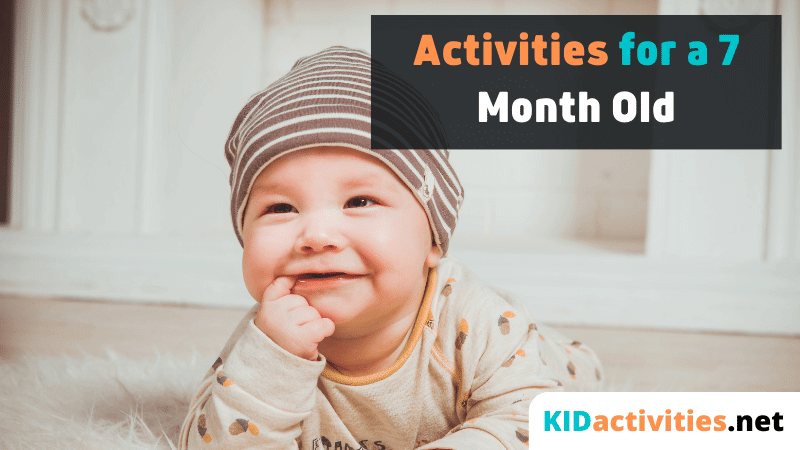The care and development of your new baby are one of the most challenging aspects of being a new parent. From feedings and diaper changes to sleep schedules and playtime, navigating this new chapter in your life can be overwhelming.
Engaging your baby in age-appropriate activities is vital for their growth and development.
A seven month old baby is rapidly acquiring new skills and abilities, including sitting up, rolling over, and interacting with their environment with their hands and mouths.
Parenting or caring for a child means providing them with a variety of activities that will support their development and promote their curiosity.
Throughout this article, we will explore 26 activities that are ideal for babies who are seven months old.
In this article:
There are many options for sensory play and reading, as well as tummy time and water play. In addition, we’ll explore how each activity supports the development of your baby’s gross motor skills, fine motor skills, social interaction, and sensory perception.
The activities listed here will provide you with ideas and inspiration whether you’re a first-time parent or a seasoned caregiver.
List of Activities for 7 Month Old Baby
1.Tummy Time

It is crucial for babies to practice tummy time in order to develop their neck and back muscles. Babies spend a lot of time on their stomachs, which puts their developing muscles under stress while trying to support their head and body.
In order to sit up, crawl, and eventually walk, babies need to strengthen these muscles.
Tummy time involves a variety of movements that assist in the development of different muscle groups. Baby’s neck and upper back muscles are strengthened when they lift their heads and chests off the ground.
The muscles in their arms, shoulders, and core are engaged as they push up on their hands and knees. Movements such as these are crucial to the development of gross motor skills and for preparing babies for the next stage of their physical development.
Aside from strengthening muscles, tummy time allows babies to gain a deeper understanding of their surroundings. Babies who spend most of their time on their backs or in a carrier have limited capabilities for exploring and interacting with the world around them.
During tummy time, babies are able to see their surroundings from a whole new perspective, which can enhance their cognitive and social development.
However, it is important ensure the safety of the baby while doing tummy time. It’s an activity that should always be supervised. Also, babies may become fussy or resist tummy time at first.
The baby should be given short periods of tummy time and gradually increased as he/she becomes more comfortable with it.
Related reads: Activities for 2 year olds | Celebrating your firth child birthday
2. Sensory Play

The purpose of sensory play is to provide babies with a variety of materials to explore using their senses. Playing in this way benefits babies in several ways, including:
- developing their sensory skills
- Enhancing cognitive development
- Aiding in motor development.
Sensory play relies heavily on different textures. Baby’s sense of touch can be developed, their hand-eye coordination improved, and their fine motor skills can be refined by allowing them to touch and feel various materials with different textures.
By exposing babies to different textures, they will also learn about the characteristics of various materials, such as the differences between soft and hard, smooth and rough, or wet and dry.
Adding color and shapes to the play environment can also facilitate sensory play. It is natural for babies to be attracted to bright colors, and colorful objects can help them learn to identify shapes and patterns and develop their visual perception.
By categorizing and sorting objects based on their shapes and colors, babies can also enhance their cognitive development.
Additionally, sensory play can also encourage oral motor skills development as babies explore objects with their mouths, which is crucial for teething, chewing, and swallowing.
3. Reading

Parenting a baby through reading offers numerous benefits for their development, and it is a wonderful activity that you can easily do together.
It is possible to empower a child with language skills, promote cognitive abilities, and strengthen the parent-child bond even at the very young age of 7 months by exposing them to age-appropriate books.
Babies can learn new words and develop their language skills by reading age-appropriate books to them. When parents read to their babies, they can point to the pictures and describe what is happening in the story.
As a result, babies are able to associate words with objects and actions, which can assist with their language development. As babies grow, reading can also give them an understanding of basic story structures and letters.
Besides promoting language development, reading can also improve cognitive skills in babies. When babies listen to stories and look at pictures, they develop their memory, attention, and comprehension.
When babies engage with a story, they develop connections between the words they hear and the images they see, which helps them develop cause-and-effect relationships, problem-solving skills, and imagination.
4. Singing

Baby’s language skills and memory can be improved with songs and nursery rhymes. You can bond with your baby by singing to them when they’re young. Babies love hearing their parents’ voices.
The repetitive phrases and melodies of songs and nursery rhymes help babies learn the words and sounds. As a result, the baby becomes familiar with the song’s pattern and can anticipate what comes next as a result of this repetition, which can aid in the development of memory skills.
Aside from improving memory, singing to babies can also help develop their language skills. The song’s lyrics and melody expose babies to a variety of words and sounds, which can facilitate their language development.
Through language exposure, babies are also able to learn how to imitate the sounds they hear and develop their speech and communication skills. In general, singing can be a fun and enjoyable activity for both parent and child and is a great way to build a strong bond with your little one.
5. Peek-a-Boo

The classic game of peek-a-boo has been enjoyed by babies and their parents for generations. In addition to being a fun activity, it also encourages social interaction between babies and develops object recognition.
Taking turns and engaging with another person are important aspects of playing peek-a-boo with a baby. With practice, the baby will look forward to their parent’s arrival and their “peek-a-boo” announcement, resulting in excitement and laughter.
Interactions between parent and child can promote social skills and bonding.
The game of peek-a-boo can also help babies to develop object permanence, which means they recognise that objects exist even when they are hidden from view.
By covering their faces with their hands or a blanket, parents teach their children that they are still there even if they cannot see their faces. Babies will likely learn to distinguish between cause and effect when they reach this developmental milestone.
In addition to being fun and beneficial for both parent and child, peek-a-boo can be a fantastic way to bond with your infant.
6. Toys and Rattles

Toys and rattles play an essential role in the development of babies, and especially around the 7 months old age and during playtime. They provide stimulation and help support their development.
In the early days of a baby’s development, it is important to encourage them to interact and explore with toys and rattles.
It is beneficial to provide babies with safe toys and rattles so they can gain physical development by reaching, grasping, and manipulating objects.
Performing this activity babies can improve their hand-eye coordination as well as finger dexterity and muscle control. In addition to developing their sense of touch, babies also learn about different textures and materials as they explore their toys.
Toys and rattles can also encourage cognitive and social-emotional development in addition to physical development. During play with toys, babies begin learning about cause-and-effect relationships, object permanence, and spatial awareness.
As babies learn to share and take turns during playtime, toys and rattles can also encourage social interaction.
When choosing toys and rattles for their babies, parents should always prioritise safety. It is important to choose toys that are age-appropriate, durable, and free of small parts that can pose a choking hazard.
7. Play Gym

Play gym is a fun and versatile way to encourage your little one’s physical and cognitive development. In addition to promoting gross motor skills development, a play gym provides babies with a colorful and interactive environment to explore and play.
Babies can reach for and grab a variety of hanging toys and accessories in play gyms, encouraging the development of grasping abilities. Babies learn to manipulate toys in the play gym by moving their bodies to reach for the toys they want to play with.
As they move their bodies to reach the toys, they develop motor skills, such as crawling and rolling over which are very important to master at the age of 7 months
Children can also benefit cognitively from play gyms as they can explore a variety of colours, textures, and sounds.
A play gym can be a fun and safe environment for babies to play and explore in addition to promoting their physical and cognitive development.
8. Baby Massage

A baby massage helps you bond with your little one while also promoting relaxation and healthy development. In addition to helping fussy babies calm down and sleep better, gentle and soothing massage strokes can also increase muscle tone and promote nervous system development.
As a parent, you can soothe and relax your little one’s muscles by using gentle strokes and techniques during a baby massage. Babies may sleep better and be more relaxed if they are less stressed and tense.
Additionally, massage can relieve digestive discomfort and promote healthy bowel movements in babies with colic.
Apart from promoting relaxation, baby massage can also improve physical development. In addition to improving your baby’s muscle tone and motion, you can also assist your baby’s physical development.
Baby massage is also a great way to bond with your little one and build a deeper connection. Physical contact and one-on-one time can help to promote feelings of security and trust, which can be crucial to a child’s emotional development.
9. Water Play

Play in the water can be both fun and stimulating for babies, and it can also contribute to their physical and mental development.
A shallow pool or bathtub can create a safe and engaging environment for your baby to explore and learn by splashing and playing.
By reaching, grasping, and splashing in the water, babies learn motion skills. In addition, by moving around and interacting with toys and objects in the water, babies can also improve their balance.
Moreover, as babies navigate around a pool or bathtub, they can develop their sense of spatial awareness and learn about cause and effect.
Creating special moments of laughter and fun with your child can be made even easier by engaging in water play. Your baby will feel more secure and trusting when you join him or her in water play, and you will build a deeper connection.
10. Bubble Play

Bubble play can be a fun and engaging activity for babies as young as 7 months old. It can promote hand-eye coordination and visual tracking skills as babies watch and reach for the bubbles.
Additionally, blowing bubbles can be a great way to encourage your baby to practice reaching and grasping skills, as they try to catch and pop the bubbles.
You can use a bubble wand or a bubble machine to create a steady stream of bubbles for your baby to enjoy. You can also use different colors and shapes of bubbles to add variety and keep your baby engaged.
Just be sure to use non-toxic bubble solution and supervise your baby closely to ensure they do not ingest any of the solution or bubbles. Overall, bubble play can be a simple and enjoyable way to encourage your baby’s development and stimulate their senses.
11. Dancing

You can encourage your baby’s physical and cognitive development, as well as strengthen your bond by dancing with him or her. Through dancing, babies can learn and grow in a variety of ways by experiencing music and movement in a unique and enjoyable way.
A key benefit of dancing with your baby is that it promotes physical development. Through dancing, babies can develop gross motor skills such as balance, coordination, and body awareness. Rhythm, tempo, and movement are taught to babies as they move to the beat.
Moreover, the experience of dancing with your baby can be a wonderful way to bond. Moving and grooving together can bring you closer to your child, creating moments of joy and connection.
When you dance with your baby, you can show them love and affection, as well as strengthen your bond over time.
12. Sensory Bins

Children, including babies, enjoy sensory bins because they allow them to explore materials with their senses. Typically, sensory bins contain materials that vary in texture, color, and shape.
When babies play with the materials in the bin, they can explore and discover through their hands, feet, and sometimes even their mouths, which can encourage their sensory development, creativity, and imagination.
Using sensory bins is an excellent way to encourage children and babies to participate in sensory play. Through sensory play, babies can develop their ability to process and respond to a variety of sensory stimuli.
Depending on the child’s interests and developmental stage, sensory bins can be filled with sand, water, rice, or pasta.
Sensory bins can also be used to promote creativity and imagination.
In addition to promoting physical development and creativity, sensory bins can also be a fun and engaging activity for parents and babies to play together.
13. Stacking Cups

Stacking cups is a fun and educational activity for babies less than one-year-old. The activity involves providing your baby with a set of cups of varying sizes that they can stack and knockdown.
This activity helps babies to grow their fine skills, hand-eye coordination, and mind skills.
As babies play with the stacking cups, they will understand how to grab and release objects, which will allow them to evolve their fine motor skills. They will also learn how to harmonise their movements and use their hands and eyes together.
Additionally, as babies stack the cups, they will begin to understand basic concepts such as size and spatial relationships, which will help to develop their mental skills.
Overall, stacking cups games is a simple yet effective activity for babies less than one-year-old. By providing them with a set of cups to stack and knock down, you can help to support their physical and cognitive development while also providing them with a fun and engaging play experience.
14. Puppet Show

Puppet shows are a great way to entertain and engage babies while also developing their mental skills and language. With the use of hand puppets, your baby can hear stories, sing songs, and learn colors, shapes, and numbers.
Your baby’s senses will be stimulated and captivated by the bright colors and lively movements of the puppets.
During the puppet show, invite your baby to play along and engage with the puppets. Using simple questions like “Where is the dog?” or “What colour is the bird?” can help develop their language skills and encourage them to take part in the story.
Playing interactively with your baby can help them develop their communication and social skills.
Besides being fun and engaging, puppet shows can help your baby develop imagination and creativity. It is important to introduce new characters and stories to your children to encourage them to think creatively and come up with their own ideas and stories.
Generally, puppet shows are wonderful activities for babies, providing them with enjoyment and educational opportunities while also promoting their overall development.
15. Soft Ball Play

The play of soft balls is a great way for babies to develop their motion skills and hand and eye coordination. During soft ball play, babies are encouraged to reach, grasp, and release the ball.
As a result of these movements, babies develop hand and finger strength. Using their eyes to track the ball’s movement, they also develop their hand-eye coordination as they catch or toss the ball and adjust their hand position accordingly.
Additionally, babies gain a sense of accomplishment and control by playing with soft balls. Having the ball in their hands and tossing it successfully builds their confidence and self-esteem.
To make the most of soft ball play with your baby, start by selecting soft, lightweight balls that are easy for your baby to grasp and handle. Make your baby reach for the ball, grab it with both hands and then release it.
The distance and height of the toss can be gradually increased as your baby becomes more comfortable with the ball.
16. Mirror Play

Mirror play helps babies develop self-awareness in a simple yet effective way. By observing their reflection in a mirror, babies can learn that they are separate individuals from those around them.
By exploring their surroundings and the image before them, babies can also improve their mental and visual skills.
However, you need to make sure your baby is in front of a safe and unbreakable mirror before you begin mirror play. Let them observe their reflection and touch the mirror to see how it responds.
To see how your baby reacts to different expressions, point out different body parts and make funny faces. Introducing babies to mirror play at an early age can help them lay the foundation for self-awareness and cognitive development.
However, babies may not fully understand the concept of the mirror until about 18 months of age.
17. Cause and Effect Toys

A cause-and-effect toy is a perfect way to teach babies the relationship between cause and effect. When the baby pushes a button or pulls a lever, these toys provide a tangible response, which can help them realize their actions have an effect on the world around them.
As a result of playing with cause-and-effect toys, children can also develop fine motor skills, hand-eye coordination, and problem-solving skills.
Toys with cause and effect are available in a variety of types that are suitable for babies. A classic example of pop-up toys is a figure or animal that emerges from a container when a button is pressed.
Other popular toys include those with lighted buttons or those that play sounds. Babies can also experience cause and effect with simple toys, such as balls that roll when pushed.
18. Musical Instruments

The world of sound and rhythm can be introduced to babies through musical instruments. You can encourage your baby to experiment with different sounds by exposing them to different musical instruments.
In addition, playing musical instruments with your baby can be a great way to strengthen your relationship. Baby-specific instruments such as shakers, rattles, and drums can be an excellent place to start.
Let your baby touch, feel, and even taste each instrument to explore the different sounds and textures.
19. Baby Sign Language

Introducing your baby to baby sign language is an incredible way to improve communication before they learn how to speak. The social interaction with your baby can be improved and frustration can be reduced by introducing them to sign language.
Simple signs like “milk,” “more,” and “all done” can be taught to babies as young as six months old. Start by showing your baby the sign whenever you say the word, such as showing the sign for “milk” whenever you say “milk” during a feeding.
The key to teaching baby sign language is consistency. Make sure your baby associates the sign with the word by repeating it often and using it in context.
When your baby begins to understand the signs, you can help them use them by modelling them and asking them to sign back. Over time, your baby may become capable of using the signs independently to communicate their needs and wants.
20. Playing with Balloons

Playing with balloons can be a fun and engaging activity for babies that can also improve their motion skills. The act of catching and holding onto balloons can encourage babies’ grasping and reaching skills.
The baby also develops hand-eye coordination and a sense of depth as they learn to reach for the balloons.
To ensure your baby’s safety, make sure balloons don’t pose a choking hazard. Always supervise your baby during playtime and use large balloons that are inflated to a safe size.
To increase your baby’s engagement and participation, you can bounce the balloons or bat them back and forth. Playing with balloons can be a great way to bond with your baby while also helping them learn important skills.
21. Crawling Games

Crawling is an essential milestone in a baby’s development as it helps to build their strength and enhance their coordination skills. Creating crawling games can be a fun and fascinating way to boost your baby to roll around and examine their surroundings.
You can set up simple barriers for your baby to crawl through, such as tunnels made out of blankets or cardboard boxes. You can also create “obstacle courses” by putting pillows, cushions, and other things on the floor for your baby to crawl over or around.
Another fun crawling game is to create a “hide-and-seek” type of game where you hide a toy or object just out of your baby’s reach and encourage them to crawl towards it.
As your baby becomes more comfortable with crawling, you can slowly raise the difficulty level of the games by making the obstacles more challenging or placing the objects further away.
These crawling games can not only help your baby to develop their crawling skills but also provide them with a fun and stimulating activity that can keep them engaged and entertained.
22. Baby-Proofed Play Areas

To ensure that your baby can explore and play independently, creating a safe and baby-proofed play area is crucial. By using baby gates, you can block off areas in your home, secure furniture and electronics, and keep small objects away from children.
Your baby needs to play in a safe environment so that he/she can explore his/her surroundings, develop motion skills, and fulfil his/her curiosity without the danger of being hurt.
To encourage further exploration and learning, you can also include toys, books, and sensory objects and let them engage with a variety of the activities that mention on our list.
23. Painting

A sensory activity such as painting can be fun and stimulating for babies. Allow your baby to explore the sensation of paint on their fingers and feet with non-toxic finger paint.
To create a designated painting area for your baby, spread out a large sheet of paper or use a large canvas. Encourage them to use their hands and feet to make marks and designs on the paper.
In any sensory activity, you should closely supervise your baby and make sure they don’t swallow the paint.
When your baby is painting, you can add other materials for them to explore, such as feathers, sponges, or textured materials. Colorful and visually stimulating paintings can also be created using different colors of paint.
Using a plastic sheet or old newspaper to protect the floor and furniture is a good idea for this activity because it can be messy. Generally speaking, painting can be a fun and creative way to engage your baby’s senses and help him or her develop important skills.
24. Playing with Flashlights

Playing with flashlights can be a fun and stimulating activity for babies. Your baby will be mesmerized by the movement of shadows when you shine a flashlight on a wall or surface.
Trying to reach for shadows can help your baby develop hand-eye coordination and motor skills. Keep your baby engaged and interested by moving the flashlight in different directions and speeds.
Use low-brightness flashlights during flashlight play to ensure safety and supervise your baby at all times. Be careful not to shine the flashlight directly into your baby’s eyes, as this can be uncomfortable and potentially harmful.
Overall, flashlight play can be a simple and enjoyable way to stimulate your baby’s senses and encourage their development.
25. Ball Pit

A ball pit can be a fun and exciting activity for babies as it supplies a safe environment for them to crawl and explore. You can create a ball pit using a little inflatable pool or playpen and fill it with soft, colorful balls.
As they play, you can also use this as an opportunity to talk to your baby, encourage their exploration, and reinforce language development.
It is essential to guarantee that the ball pit is put up in a safe and supervised area. Always supervise your baby when they are in the ball pit and remove any toys or objects that could be a choking hazard.
Additionally, make sure that the balls are clean and free from any harmful substances. Regularly clean and sanitize the balls to ensure that they are safe for your baby to play with.
Overall, a ball pit can be a fun and exciting activity for babies to explore and play in, while also helping to develop their physical and cognitive skills.
26. Walks

An important benefit of taking your baby for a walk is the chance to get fresh air and urge him or her outdoors. The experience of seeing, hearing, and feeling new things in their environment can help support their cognitive and sensory development.
Fresh air and natural light can also help strengthen babies’ immune systems while improving their mood.
Taking your baby on a stroll with you can also promote physical development, as they will learn how to balance, coordinate, and move as they ride in a stroller or carrier.
The act of walking can strengthen your baby’s leg muscles as well as promote their overall well-being by providing them with a gentle form of exercise.
Taking your baby for a walk is not only physically and cognitively beneficial but can also strengthen your bond as a parent. A walk together can be a great opportunity to connect with your child, talk to them, and share special moments together.
It is important to spend time walking with your baby in order to build a strong and loving relationship as well as to create happy, lasting memories.
At 7 months old, babies are growing fast and are keen to examine the world around them. Engaging them in different activities can not only help grow their motion skills and mental abilities but also facilitates bonding and socialization.
Now let’s look at what skills a 7 month old baby is developing at this stage.
Skills a 7 months old baby develops
Some skills like rolling over, recognizing her own name, responding to sounds are all signals we use to track the development of our babies. While each child is unique and develops at his or her’s own time, these are good rule of thumbs to track to make sure there are no developing issues.
NOTE – don’t be worried if your child is missing one or even two of these skills, but if you feel there is a need to consult please reach out to your pediatrician
Here’s a quick table showing what you should expect your 7 months old baby to be able to do:
| Social and emotional skills | Language and communication skills | Cognitive skills | Fine motor and gross skills |
| Will respond to an expression of emotions | Can bubble sounds and mamble | Can locate a semi hidden object | Should be able to sit without assistant |
| Likes to play with his caregivers or parents | Will respond to sounds by making sounds of his own | May struggle to grab objects just out of reach | |
| Will enjoy looking at his own reflection | Babbling but will string sounds together | Still using mouth and hands to identify objects | |
| Starting to recognize familiar faces | Should start to respond to her or his name |
Things to consider
There are multiple activities that parents can do with their 7 month old babies to keep them engaged and encouraged. Simple activities such as reading, singing, and playing with toys can help develop their language and communication skills.
Playing with musical instruments and listening to different sounds can improve their auditory skills while crawling games and ball pits can help them develop their gross motor skills.
Other activities such as water play, painting, and sensory bins can encourage sensory exploration and enhance their hand-eye coordination.
Additionally, spending time with other parents and babies can help promote socialisation and build relationships.
However, it’s important to note that every baby is different and may have their own unique interests and preferences. Parents should always watch their babies during these activities and adapt accordingly to guarantee their protection and convenience.
Engaging in these activities can not only provide fun for both babies and parents but also foster a sense of curiosity and a love for learning in babies from an early age.

